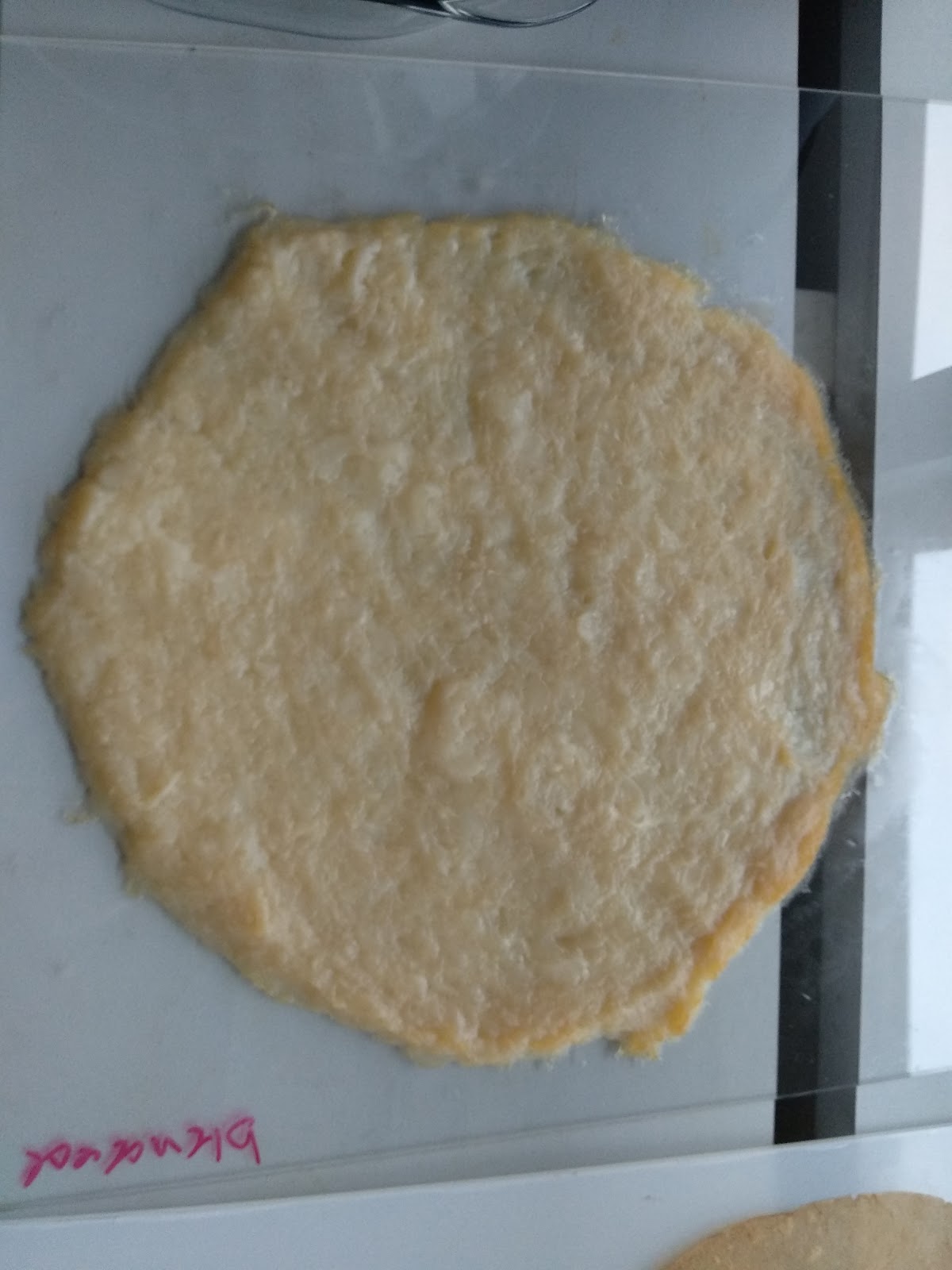The scoby experiments, part 2 - Blending the scoby
An update on the blended scoby
This is just a short update on my ongoing search to create a sustainable, homegrown alternative to leather.
In my last post, i started the Scoby experiments by setting over a series of caffeinated teas. These experiments are still ongoing, and i am currently setting up a few other ones. The current experiment has to do with finding a way to reuse the damaged scobies.
During the growth process, it sometimes happens that trapped gases beneath the cellulose layer will deform the scoby. As can be seen below, this will cause the growing layer of cellulose to rise up, so it no longer has any contact to the liquid below. As it no longer is in contact with the kombucha, it cannot grow any further.

Meanwhile, the rest of the scoby is growing on without any hiccups, causing the dried scoby to look something like this.

Naturally, this is not very useful at all as no one would wear clothing with holes in them, no matter how strategically they were placed… Wait, this is not actually true, there’s a whole industry around pre distressed jeans. Still i don’t like the ídea of creating holed fabrics, and would like to find a solution.
While eliminating the problem of trapped gases to begin with would undoubtedly be a neat solution, i will for now be satisfied with finding a way to reuse the damaged scobies. Damages are bound to occur one way or another and finding a way to address this issue is therefore advantageous.
I am currently working with is blending the scoby, in an effort to see how it reacts. The idea is to blend up all of the damaged scobies, and spread it in a thin sheet, to see if it grows back together. Theoretically, this would allow for a zero waste production, that could create as large a piece a textile as needed. Since you would simply need to spread it in a sheet, the only limiting factor would be the size of the surface you’re spreading it out on. When you grow a scoby normally, you are limited by the size of the container, meaning that it can take up a lot of room. If the blending method is viable, it could therefore solve a lot of potential issues.
Below you can see a picture of the blended scoby. Yummy, huh?

Looks somewhat like apple porridge, but i suspect that it tastes much, MUCH worse. We blended the scoby with a bit of kombucha, until it had a smooth consistency. It was easy to spread, and it held its shape nicely.
After a few days, the scoby is dry, and this is the result.

As you can see, the scoby is somewhat damaged. This is due to the fact that it got stuck to the acrylic plate it was dried on. We therefore had to scrape it off with a knife. We have since recreated the experiment with a silicone mat as a replacement for the acrylic plate, and this seems like a much better alternative.
For a first experiment, it is very promising. Despite the damages, the material is tough and flexible. It is also softer, and a bit more flexible than its non blended counterpart. It seems like this slight flex to the material helps protect against tearing, as it is less brittle than a grown scoby. In many ways, the blended material seems more promising than the normally grown material, so we will definitely continue in this direction. We still have a long way to go, and want to experiment further with thickness, different textures, sizes, shapes, and more. All in all, this experiment was very successful, and i am super hopeful for the future of the project.
That is all for now, thanks for reading, i hope you all will have a wonderful day
This is super interesting to follow. I'm enjoying it. Also, you have a small but amusing typo in your title. :)
Thank you so much, i had completely missed that xD Very nicely spotted